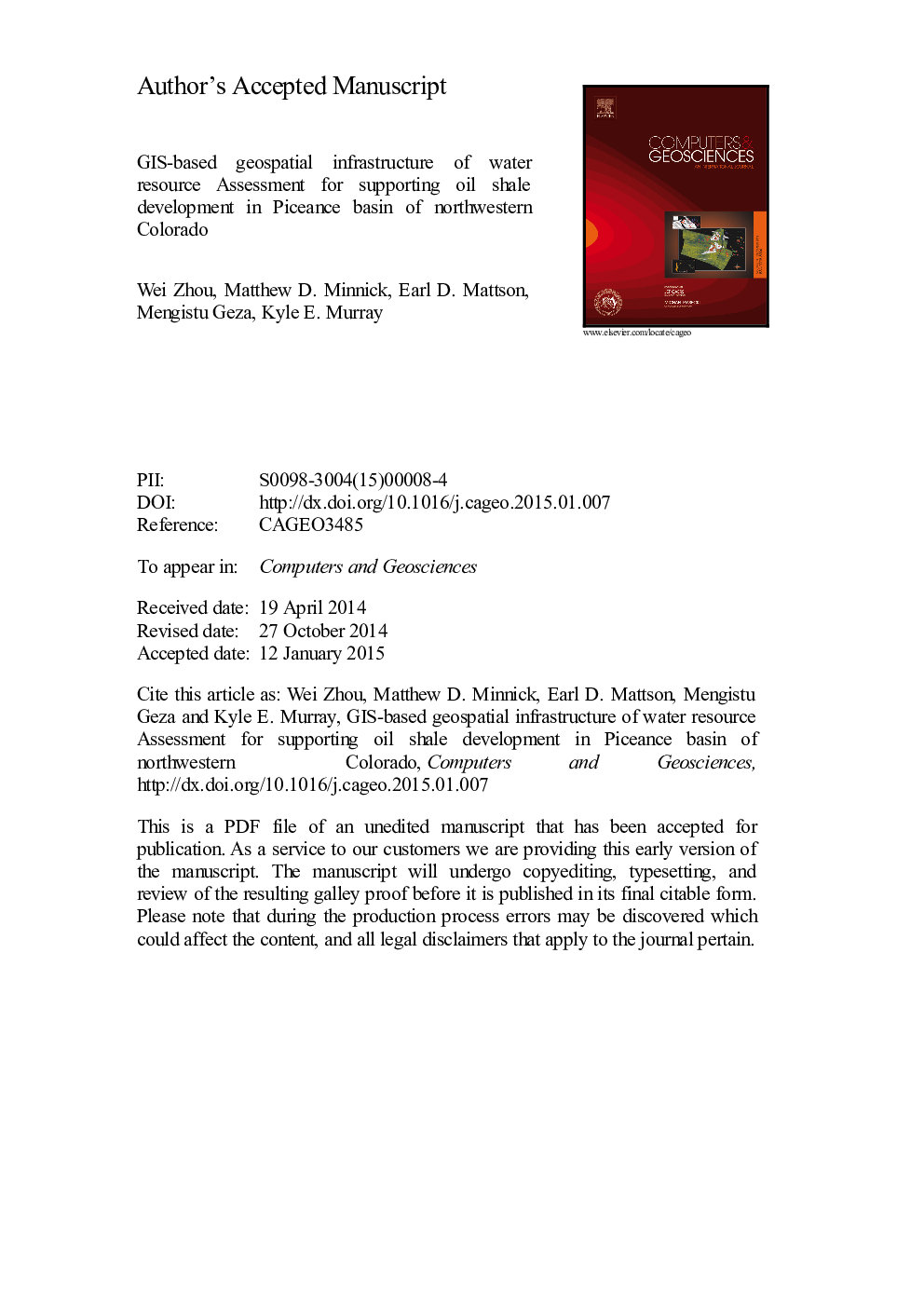| Article ID | Journal | Published Year | Pages | File Type |
|---|---|---|---|---|
| 6922588 | Computers & Geosciences | 2015 | 33 Pages |
Abstract
Oil shale deposits of the Green River Formation (GRF) in Northwestern Colorado, Southwestern Wyoming, and Northeastern Utah may become one of the first oil shale deposits to be developed in the U.S. because of their richness, accessibility, and extensive prior characterization. Oil shale is an organic-rich fine-grained sedimentary rock that contains significant amounts of kerogen from which liquid hydrocarbons can be produced. Water is needed to retort or extract oil shale at an approximate rate of three volumes of water for every volume of oil produced. Concerns have been raised over the demand and availability of water to produce oil shale, particularly in semiarid regions where water consumption must be limited and optimized to meet demands from other sectors. The economic benefit of oil shale development in this region may have tradeoffs within the local and regional environment. Due to these potential environmental impacts of oil shale development, water usage issues need to be further studied. A basin-wide baseline for oil shale and water resource data is the foundation of the study. This paper focuses on the design and construction of a centralized geospatial infrastructure for managing a large amount of oil shale and water resource related baseline data, and for setting up the frameworks for analytical and numerical models including but not limited to three-dimensional (3D) geologic, energy resource development systems, and surface water models. Such a centralized geospatial infrastructure made it possible to directly generate model inputs from the same database and to indirectly couple the different models through inputs/outputs. Thus ensures consistency of analyses conducted by researchers from different institutions, and help decision makers to balance water budget based on the spatial distribution of the oil shale and water resources, and the spatial variations of geologic, topographic, and hydrogeological characterization of the basin. This endeavor encountered many technical challenging and has not been done in the past for any oil shale basin. The database built during this study remains valuable for any other future studies involving oil shale and water resource management in the Piceance Basin. The methodology applied in the development of the GIS based geospatial infrastructure can be readily adapted for other professionals to develop database structure for other similar basins.
Keywords
Related Topics
Physical Sciences and Engineering
Computer Science
Computer Science Applications
Authors
Wei Zhou, Matthew D. Minnick, Earl D. Mattson, Mengistu Geza, Kyle E. Murray,
